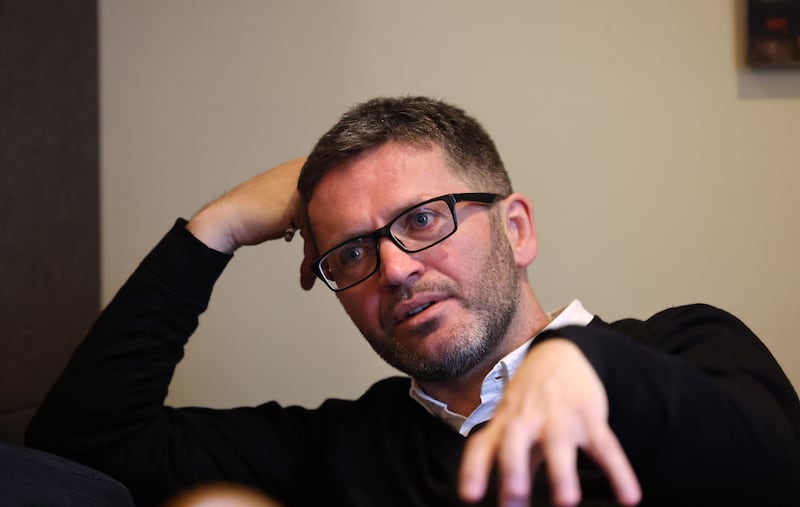It is “very likely” many of the remains of 796 babies and toddlers, buried at the site of the former mother and baby home in Tuam, Co Galway, will never be identified, the man leading the exhumation has said.
Daniel Mac Sweeney, who was appointed by Minister for Children Roderic O’Gorman in May, as director of authorised intervention, describes the process ahead as “among the most complex” undertaken anywhere and “certainly the most complicated” he has ever done.
Gardaí and the coroner will be informed in any case where there is evidence of “unlawful” death, and families of the dead children will be “at the centre of everything we do”, he says.
A solicitor by training, the Corkman has for the past 15 years worked with the Red Cross, with populations affected by conflict. Most recently he was on the international committee of the Red Cross’s envoy on missing persons, in the Causcasus region, focused on locating and returning to families the remains of people missing since the conflicts in the 1990s.
READ MORE
He was in Lebanon when the story broke in 2014 that Catherine Corless, local historian in Tuam, had identified death certificates for 796 children, aged from 35 foetal weeks to between two and three years, who had died at Bons Secours mother and baby home between 1925 and 1961. Their remains were placed in a disused septic tank, with some also buried elsewhere around the home, which is now demolished.
Appointed following a public recruitment process, Mr Mac Sweeney has been provided with an office in Galway city but as yet has no staff. “I have to set up the office, to find a lab premises, an IT system, hire people. There will be about 10 employees.” Further detailed research will be undertaken before “the dig” can start.

“In six months I’ll have an idea of when excavation will happen,” he says.
Identifying remains will require DNA samples from close family members. So far the number of families who have come forward is small – “in the dozens”. An outreach call is planned, to invite anyone who believes a relative is among the dead, to contact his team.
Exhumation will be painstaking. Each infant or child would have had up to 300 tiny bones (compared with 206 in an adult). Ideally, he says, each body would have been tightly swaddled in cloth and kept separate, but that is “unlikely”.
Until excavation starts, it remains unknown “how disarticulated are the remains, how co-mingled are the remains” and whether “it is possible to extract DNA from them or not”.
He has been involved in complex processes to identify dead loved ones elsewhere. “But what is different about Tuam is their age... it’s babies”.
It remains unclear what condition the remains are in, how exposed to water they were in the intervening 60-90 years. Water, he notes, can “wash DNA away”.
“There are other ways maybe... but we really are at the limits of forensic science,” he says. “And because these bones are so small, by doing DNA sequencing you can actually destroy the bone. That is something we may have to grapple with, with the families.”
Identified remains will be returned to loved ones. Where they cannot be identified, they will be reinterred at a memorial site in Tuam.
“Returning remains to families is very emotional and very valuable. I think, where that is not possible, certainly for some, just knowing their relative is here will be enough. There is a lot of suffering related to not knowing, to the uncertainty. I have seen this in conflict situations, bringing an end to the uncertainty... is very positive.
[ Maureen Gaffney: The land of the mother and baby homesOpens in new window ]
“I think it is going to be difficult to end the uncertainty for all because it will depend on what we find. But even getting the remains out of this inappropriate place is a worthy goal in itself.
“If a small number of families come forward, that is the limit of how many we can identify... It is very likely there will be a number, possibly large number, of unidentified remains and that is where the memorialisation part is key.”
Crucial will be “keeping the families and their loved ones at the centre of everything we do”, he says. “Respect, talking to the families, explaining what I am doing, giving them an opportunity to ask questions and bringing them through the process with me.”
He has contacted gardaí and the local coroner, and hopes to meet them in coming weeks. He is yet to contact the Bon Secours nuns who, he believes, hold important records to aid research before exhumation starts.
“The lives lost here were very short. Bringing clarity and answers to the families is very important. And then for us all, as a community, it is important for us all that there is some degree of resolution of this dark chapter.”















